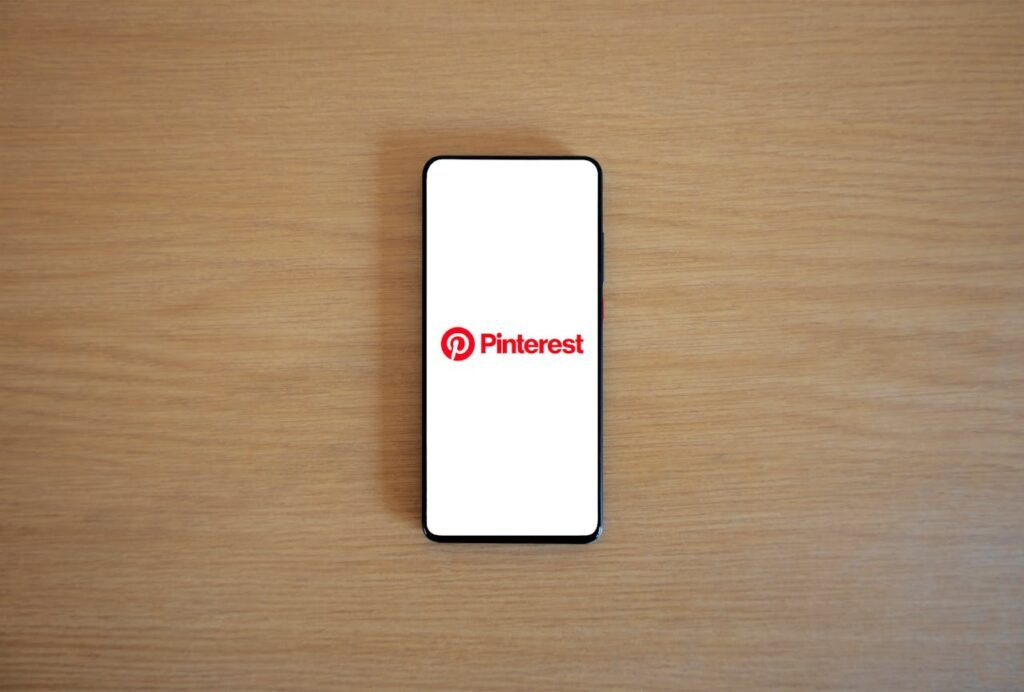Email marketing is one of the most powerful tools in a marketer’s arsenal. It allows you to directly reach your audience, build relationships, and drive conversions. But creating an effective email marketing campaign isn’t just about sending out a few emails. It requires careful planning, strategic thinking, and attention to detail. In this article, we will explore how to create effective email marketing campaigns that engage your audience and achieve your marketing goals.
Understanding Your Audience
Identify Your Target Audience
The first step in creating an effective email marketing campaign is understanding who your audience is. Identify the demographics, interests, and behaviors of your target audience.
Knowing who they are will help you tailor your messages to their needs and preferences.
Segment Your Audience
Segmenting your audience allows you to send more personalized and relevant emails. Divide your list into smaller groups based on criteria such as purchase history, engagement level, or demographic information.
This way, you can create targeted campaigns that resonate with each segment.
Create Buyer Personas
Creating buyer personas helps you visualize your ideal customers. Develop detailed profiles that include their interests, pain points, and buying behavior.
These personas will guide your content creation and ensure your emails speak directly to your audience’s needs.
Crafting Compelling Content
Write Attention-Grabbing Subject Lines
The subject line is the first thing your recipients see, so make it count. Write subject lines that are clear, compelling, and relevant.
Use action words and create a sense of urgency or curiosity to entice readers to open your email.
Focus on a Clear Message
Each email should have a clear and focused message. Avoid cramming too much information into one email. Instead, concentrate on one main idea or call to action.
This makes your email easier to read and more likely to achieve its goal.
Use a Conversational Tone
Write your emails as if you are speaking directly to the recipient. Use a conversational tone to make your emails more relatable and engaging.
This approach helps build a connection with your audience and encourages them to respond or take action.
Use Power Words and Emotive Language
Incorporate power words and emotive language to evoke strong emotions and compel action. Words like “free,” “limited-time,” “exclusive,” “urgent,” or “discover” can create a sense of urgency or excitement.
Pair them with compelling visuals or testimonials to reinforce your message.
Focus on Benefits, Not Features
Highlight the benefits of your product or service rather than just listing features. Clearly communicate how your offering solves problems, improves lives, or enhances experiences for your customers.
Show the tangible benefits they can expect from choosing your solution.
Maintain Consistency Across Campaigns
Ensure consistency in tone, style, and messaging across all your email campaigns. A consistent brand voice helps build trust and familiarity with your audience.
Use brand guidelines to maintain coherence and reinforce your brand’s identity with every email sent.
Include a Call to Action (CTA) That Drives Action
Every email should include a clear and compelling call to action (CTA) that encourages recipients to take the next step. Use actionable language and make the CTA stand out visually.
Whether it’s “Shop Now,” “Learn More,” or “Start Your Free Trial,” the CTA should prompt immediate action.
Encourage Two-Way Communication
Promote engagement by encouraging recipients to reply to your emails or leave feedback. Ask questions, solicit opinions, or invite them to share their experiences.
Two-way communication builds relationships and provides valuable insights into your audience’s preferences.
Test and Iterate for Continuous Improvement
Continuously test different elements of your email content to optimize performance. Experiment with subject lines, email copy, visuals, CTAs, and send times to see what resonates best with your audience.
Use A/B testing to gather data and make data-driven decisions for future campaigns.
Use Personalization for Relevance
Personalize your email content based on subscriber data and behavior. Address recipients by name, recommend products based on past purchases, or send tailored content based on their preferences.
Personalization increases engagement and strengthens customer relationships
Designing Effective Email Templates
Embrace Minimalism and Clarity
Opt for a minimalist email design that focuses on clarity and simplicity. Avoid cluttered layouts or excessive use of images and text.
A clean design with ample white space enhances readability and ensures your message is easy to digest at a glance.
Use Responsive Design for Accessibility
Ensure your email templates are responsive and accessible across various devices and screen sizes. A significant portion of users reads emails on mobile devices, so prioritize a responsive layout that adjusts seamlessly to different screens.
Test your templates thoroughly to guarantee a consistent user experience.
Incorporate Visual Hierarchy
Utilize visual hierarchy to guide recipients through your email content intuitively. Place the most important elements such as headlines, CTAs, and key messages prominently.
Use contrasting font sizes, colors, and formatting to emphasize critical information and maintain engagement.
Implement Brand Consistency
Maintain consistency with your brand’s visual identity in your email templates. Use your brand’s colors, fonts, and logo consistently to reinforce brand recognition.
Consistent branding fosters trust and familiarity with your audience, enhancing the impact of your email campaigns.
Prioritize Accessibility
Ensure your email templates are accessible to all recipients, including those with disabilities. Use accessible colors, alt text for images, and readable font sizes.
Design with accessibility in mind to reach a broader audience and comply with accessibility standards.
Optimize Loading Speeds
Optimize your email templates for fast loading speeds to prevent recipients from losing interest or abandoning your email. Minimize large image files, use web-safe fonts, and optimize HTML and CSS code.
A fast-loading email enhances user experience and increases engagement.
Experiment with Interactive Elements
Explore interactive elements such as accordions, carousels, or hover effects to enhance user engagement. Interactive content encourages recipients to interact with your email, increasing time spent reading and click-through rates.
Test interactive elements to ensure compatibility across email clients.
Incorporate Social Proof
Include social proof elements such as customer testimonials, user-generated content, or client logos in your email templates. Social proof builds credibility and trust with recipients, influencing their decision-making process positively.
Highlighting endorsements from satisfied customers can persuade recipients to take action.
Leverage Dynamic Content
Use dynamic content in your email templates to personalize messages based on recipient data. Insert dynamic elements such as product recommendations, personalized offers, or location-based content.
Dynamic content enhances relevance and encourages higher engagement and conversions.
Ensure Clear Navigation
If your email includes multiple sections or offers, ensure clear navigation through the use of anchored links or a table of contents. Allow recipients to easily jump to relevant sections of interest without scrolling extensively.
Clear navigation enhances usability and improves overall user experience.
Personalizing Your Emails
Implement Behavioral Segmentation
Go beyond basic demographics and segment your email list based on user behavior. Track how subscribers interact with your emails, website, and products.
Use this data to tailor email content to their specific interests and behaviors, such as browsing history, purchase frequency, or engagement level.
Use the Recipient’s Name
Personalization starts with using the recipient’s name. It makes your emails feel more personal and less like mass marketing. Most email marketing platforms allow you to automatically insert the recipient’s name into the email.
Tailor Content to Interests
Personalize your content based on the recipient’s interests and behavior. Use data from past interactions to tailor your messages. For example, recommend products similar to those they’ve purchased before or content related to their browsing history.
Send Behavior-Triggered Emails
Behavior-triggered emails are sent based on specific actions taken by the recipient. For example, you can send a welcome email when someone signs up, a reminder email if they abandon their cart, or a follow-up email after a purchase.
These emails are timely and relevant, making them more effective.
Test and Optimize
A/B testing allows you to compare different versions of your emails to see which performs better. Test various elements such as subject lines, email copy, visuals, and CTAs.
Use the results to optimize your emails and improve their effectiveness.
Building and Growing Your Email List

Offer Valuable Incentives
To grow your email list, offer valuable incentives that encourage people to sign up. These could include discounts, free resources, or exclusive content. Make sure the incentive is relevant and appealing to your target audience.
Create High-Converting Signup Forms
Design signup forms that are simple and easy to complete. Place them in strategic locations on your website, such as the homepage, blog posts, and landing pages. Use clear and compelling language to explain the benefits of signing up.
Use Social Media to Promote Your List
Promote your email list on your social media channels. Share the benefits of joining your list and include a direct link to your signup form. You can also run social media campaigns or contests to encourage signups.
Leverage Partnerships and Collaborations
Collaborate with other businesses or influencers in your niche to promote your email list. This can help you reach a wider audience and attract more subscribers. Offer to promote their content in exchange for them promoting your list.
Implement Exit-Intent Popups
Use exit-intent popups to capture visitors who are about to leave your website. Offer them a compelling reason to stay and sign up for your email list. Exit-intent popups can be highly effective in converting visitors into subscribers.
Automating Your Email Campaigns
Set Up Welcome Series
A welcome series is a sequence of emails sent to new subscribers to introduce them to your brand. This series can include a welcome message, an introduction to your products or services, and helpful content.
Automating your welcome series ensures that every new subscriber receives a consistent and engaging experience.
Use Drip Campaigns
Drip campaigns are automated email sequences that send pre-written emails to subscribers over time. They can be used for nurturing leads, onboarding new customers, or promoting specific products.
Drip campaigns keep your audience engaged and move them closer to conversion.
Segment Your List for Targeted Campaigns
Automate the process of segmenting your email list based on subscriber behavior and preferences. This allows you to send more relevant and personalized emails.
For example, segment your list by purchase history, email engagement, or demographic information.
Automate Re-engagement Campaigns
Set up automated re-engagement campaigns to win back inactive subscribers. These campaigns can include a series of emails designed to re-capture their interest.
Offer special deals, highlight popular content, or ask for feedback to understand why they became inactive.
Monitor and Optimize Automation Workflows
Regularly monitor the performance of your automated email workflows. Look at metrics like open rates, click-through rates, and conversions to identify areas for improvement.
Continuously optimize your workflows to ensure they remain effective and aligned with your goals.
Compliance and Best Practices
Ensure Compliance with GDPR and CAN-SPAM Laws
It’s crucial to comply with data protection regulations such as GDPR (General Data Protection Regulation) and CAN-SPAM (Controlling the Assault of Non-Solicited Pornography And Marketing) Act.
Familiarize yourself with these laws and ensure that your email marketing practices, including data collection, storage, and processing, adhere to legal requirements.
Provide Clear Opt-In and Opt-Out Options
Offer clear opt-in options for subscribers to consent to receiving emails from you. Use double opt-in methods where possible to confirm subscribers’ consent.
Additionally, provide easy and visible opt-out options in every email, allowing recipients to unsubscribe effortlessly.
Respect Subscribers’ Privacy
Respect your subscribers’ privacy by safeguarding their personal information. Clearly communicate how you will use their data and ensure it is protected from unauthorized access or disclosure.
Transparency builds trust and encourages long-term subscriber relationships.
Enhancing Email Deliverability
Maintain a Clean Email List
Regularly clean your email list by removing inactive or bounced email addresses. High bounce rates and spam complaints can negatively impact your sender reputation and deliverability.
Use email verification tools to ensure your list remains clean and up-to-date.
Use a Consistent Sending Schedule
Establish a consistent sending schedule to maintain engagement and improve deliverability. Sending emails at predictable times helps recipients anticipate your messages and reduces the likelihood of your emails being marked as spam.
Monitor Sender Reputation
Monitor your sender reputation to ensure your emails reach recipients’ inboxes. A good sender reputation is based on factors like low bounce rates, low spam complaints, and high engagement rates.
Use email deliverability tools to monitor and improve your reputation.
Building Relationships Through Email Marketing

Focus on Providing Value
Focus on providing value to your subscribers with each email you send. Offer helpful tips, exclusive content, special offers, or personalized recommendations that resonate with their interests and needs.
Providing consistent value builds trust and strengthens relationships.
Encourage Engagement
Encourage engagement with your emails by including interactive elements such as polls, surveys, or clickable buttons. Prompt recipients to reply to your emails or visit your website for more information.
Engagement signals to email providers that your emails are relevant and desired.
Personalize Communication
Personalize your email communication based on subscriber data and preferences. Use dynamic content, personalized recommendations, and targeted offers to make your emails more relevant and engaging.
Personalization fosters a deeper connection with your audience.
Additional Tips for Email Marketing Success
Leverage User-Generated Content
User-generated content (UGC) can add authenticity and engagement to your email campaigns. Incorporate customer reviews, testimonials, or user photos into your emails to showcase social proof and build trust with your audience.
Implement Email Segmentation Strategies
Refine your segmentation strategies to deliver more personalized and targeted content. Segment your audience based on demographics, behavior, purchase history, or engagement level.
Tailor your emails to address the specific needs and interests of each segment.
Use Email Automation for Follow-Ups
Automate follow-up emails based on subscriber actions or behavior. Send automated responses to abandoned carts, post-purchase follow-ups, or renewal reminders.
Automation ensures timely communication and improves customer experience.
Optimize Email Subject Lines for Engagement
Continuously test and optimize your email subject lines to improve open rates. Experiment with different lengths, tones, and types of subject lines to see what resonates best with your audience.
Use compelling language and create a sense of urgency or curiosity.
Integrate Email Marketing with Other Channels
Integrate your email marketing efforts with other digital marketing channels for a cohesive strategy. Coordinate email campaigns with social media posts, blog content, or paid advertising to amplify your message and reach a broader audience.
Monitor Industry Trends and Innovations
Stay informed about emerging trends and innovations in email marketing. Explore new technologies, email design trends, and best practices to stay ahead of the competition.
Experiment with innovative approaches to keep your campaigns fresh and engaging.
Conduct Regular Email Marketing Audits
Perform regular audits of your email marketing strategies and performance metrics. Evaluate the effectiveness of your campaigns, analyze subscriber engagement, and identify areas for improvement.
Use audit findings to refine your strategy and optimize future campaigns.
Crafting Compelling Content
Tell Stories That Resonate
Storytelling is a powerful technique to captivate your audience and create emotional connections. Craft narratives that resonate with your target audience’s aspirations, challenges, or values.
Use anecdotes, customer success stories, or personal experiences to illustrate how your product or service can make a difference in their lives.
Address Pain Points Directly
Understand your audience’s pain points and address them directly in your email content. Acknowledge common challenges or frustrations they may face and position your offering as a solution.
Use empathetic language to show you understand their needs and are ready to help.
Offer Exclusive Value
Provide exclusive value to your subscribers that they can’t find elsewhere. Offer sneak peeks, early access to new products or services, or special discounts reserved for email subscribers.
Make your subscribers feel privileged and valued for being part of your email list.
Use Power Words and Emotive Language
Incorporate power words and emotive language to evoke strong emotions and compel action. Words like “free,” “limited-time,” “exclusive,” “urgent,” or “discover” can create a sense of urgency or excitement.
Pair them with compelling visuals or testimonials to reinforce your message.
Focus on Benefits, Not Features
Highlight the benefits of your product or service rather than just listing features. Clearly communicate how your offering solves problems, improves lives, or enhances experiences for your customers.
Show the tangible benefits they can expect from choosing your solution.
Maintain Consistency Across Campaigns
Ensure consistency in tone, style, and messaging across all your email campaigns. A consistent brand voice helps build trust and familiarity with your audience.
Use brand guidelines to maintain coherence and reinforce your brand’s identity with every email sent.
Include a Call to Action (CTA) That Drives Action
Every email should include a clear and compelling call to action (CTA) that encourages recipients to take the next step. Use actionable language and make the CTA stand out visually.
Whether it’s “Shop Now,” “Learn More,” or “Start Your Free Trial,” the CTA should prompt immediate action.
Encourage Two-Way Communication
Promote engagement by encouraging recipients to reply to your emails or leave feedback. Ask questions, solicit opinions, or invite them to share their experiences.
Two-way communication builds relationships and provides valuable insights into your audience’s preferences.
Test and Iterate for Continuous Improvement
Continuously test different elements of your email content to optimize performance. Experiment with subject lines, email copy, visuals, CTAs, and send times to see what resonates best with your audience.
Use A/B testing to gather data and make data-driven decisions for future campaigns.
Use Personalization for Relevance
Personalize your email content based on subscriber data and behavior. Address recipients by name, recommend products based on past purchases, or send tailored content based on their preferences.
Personalization increases engagement and strengthens customer relationships.
Analyzing and Measuring Success

Track Key Metrics
Tracking key metrics is essential for understanding the success of your email campaigns. Focus on metrics like open rates, click-through rates, conversion rates, and unsubscribe rates.
These metrics provide insights into how your audience is engaging with your emails.
Conduct Regular A/B Testing
A/B testing helps you identify what works best for your audience. Test different subject lines, email designs, copy, and CTAs. Use the results to refine your strategy and improve your campaign performance over time.
Use Analytics Tools
Use email marketing analytics tools to gain deeper insights into your campaigns. Most email marketing platforms offer built-in analytics that show how your emails are performing.
Use these tools to track engagement, measure ROI, and identify trends.
Gather and Act on Feedback
Encourage feedback from your subscribers to understand their preferences and improve your emails. Use surveys, polls, or direct questions in your emails to gather insights.
Act on this feedback to make your campaigns more relevant and valuable to your audience.
Set Clear Goals and KPIs
Set clear goals and key performance indicators (KPIs) for your email marketing campaigns. Having defined goals helps you stay focused and measure your success.
Regularly review your progress against these goals and adjust your strategy as needed.
Wrapping it up
Effective email marketing campaigns are pivotal for startup success, offering direct engagement with audiences and driving conversions. By leveraging personalization, dynamic content, and behavioral segmentation, startups can create compelling email experiences that resonate with recipients on a personal level.
Continuous testing, optimization, and ethical data practices are crucial for refining strategies and maintaining subscriber trust. Embracing these advanced tactics ensures that email campaigns not only deliver results but also foster long-term customer relationships and business growth.
Incorporate these strategies into your email marketing efforts to achieve lasting impact and measurable success for your startup.
READ NEXT:






















Comments are closed.